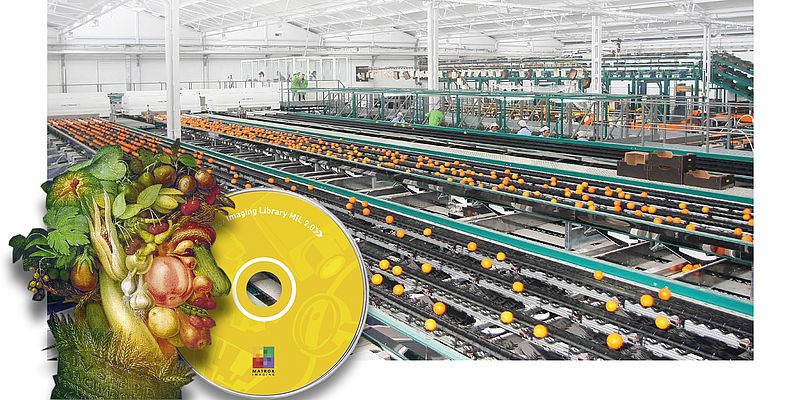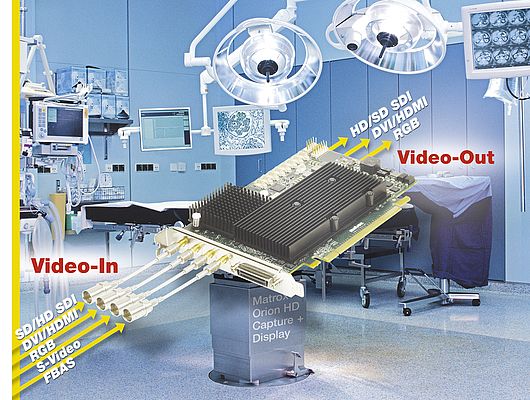Machine vision has been a driver for automation from the very beginning. Industrial imaging applications are found nowadays in all industry sectors and have long begun to conquer non-industrial sectors ranging from traffic surveillance to consumer electronics. The still relatively young technological discipline has undergone a remarkable evolution supported by pioneers in the sector, technological advance and industries in need for solutions to automate their production.
The first machine vision systems were available at the end of the 70ies of the last century, a time where computers still were complex and expensive machines. Universities and research institutes in the 70ies and 80ties developed the mathematical methods and algorithms which lay the ground for processing images through a computer. These methods were later optimized by machine vision pioneers in their ambition to transform an analog image to a digital image and process it through a computer to analyze the image and extract information from it such as pattern recognition, classification, measurement, or positioning. Main technical hurdles to overcome in the beginning were low resolution cameras not yet capable to acquire images at production speed and the computer power struggling to process the huge amount of information provided. First applications soon were opened up: The US-semiconductor industry installed systems in their production lines for electronic board inspection and code identification of wafers, but also first attempts to guide robots with machine vision were led for instance by Stanford Research Institute (SRI) and MIT. Price was another critical factor these days, with minimum costs for a system of some 40.000,- US $. The first enterprises were founded specifically to serve machine vision needs in the early 80ies. Automatic inspection of production lines became a major market for machine vision in Europe, with the automotive, lighting, packaging and pharmaceutical industries getting aware of the potential of the technology even at this early stage. In particular the automotive industry also pushed industrial robot guidance forward in the 80ties to improve automation in assembly operations such as automatic wheel mounting and windshield gluing.
Major technological breakthroughs
Several technological steps marked the evolution of machine vision. Being a still small industry, progress in the machine vision core disciplines illumination sources, optics, image sensors, interfaces, PC platforms and memories/microcontrollers was mainly driven by other industries at that time. A first breakthrough was the development of CCD image sensors in the early 80ies led by Sony. In the late 80ies, the introduction of frame grabbers for personal computers enabled high capacity memories to buffer large amounts of data. In 1995, a new PC generation equipped with the high speed communication PCI bus and the second generation of Pentium processors enabled the PC to become the standard platform for industrial vision systems. More complex tasks could be solved now running on affordable computers mostly equipped with Windows 95. In the same period, LEDs and lasers found their way into machine vision as more reliable and more compact lighting solutions than the hitherto used lighting sources. Additionally, more computational power was achieved with parallel computers. The late 1990ies brought the first digital cameras and new image sensors, in particular CCD and CMOS sensors with full frame acquisition. In addition, new processors using FPGA were developed by the semiconductor industry. With the introduction of smart cameras and compact machine vision systems in the 2000s which included the sensor, lighting, processing and interfaces, costs for simple vision solutions went down dramatically and the number of installed systems skyrocketed. Simplicity was born in machine vision technology and with it more and more integrators offered their services. The years from 2010 onward were marked by the development of high resolution cameras and new cost-effective CMOS cameras. The introduction of 3D cameras together with ever more computational power for high speed processing brought the capacity to process 3D clouds of points in real time.
Standardization as key driver
The development and adoption of standards was critical for the machine vision industry. IEEE 1394, also known as FireWire, was developed by Apple Inc. in 1987 and was used in the machine vision industry early on. With the first cameras having a digital interface, CameraLink was a breakthrough as the first standardization to connect physically different cameras and frame grabbers. Later on, the GigE Vision standard was released in 2006 for users who did not need high speed or a frame grabber, but preferred high cable lengths. This was followed by other standards eliminating more limitations in terms of cost and speed, namely CoaXPress (2010), Camera Link HS (2012), and USB3 Vision (2013). On the software side the GenICam and IIDC2 standards were developed to offer a bridge connecting all kinds of cameras through a unified interface. The development of these standards made the industry more transparent as different suppliers could be compared now, accelerated the development of new technologies and decreased development costs dramatically. In 2009, the three leading vision associations European Machine Vision Association (EMVA), AIA, and JIIA formed a cooperative initiative to coordinate the development of globally adopted vision standards.
Rising level of automation and cheaper systems
Several economic factors have promoted the breakthrough of machine vision technology in the past decades, starting with automation requirements to reduce production costs and raise productivity. The precision and speed of quality inspection needed could not be reached by human inspection anymore. In parallel, technological advance together with economies of scale e.g. in camera production; and the focus of machine vision players on core competences led to massive price reduction of vision systems to only a fraction of the prices charged in the early days. Together with prices also components miniaturized. In addition, the importance of legal issues such as brand protection and product safety has gone up. For instance, legislation in countries like Turkey and France already mandate that serial bar codes which are being inspected by optical systems must be printed on pharmaceutical packages to ensure tractability of the products.
Outlook
The technical evolution of machine vision technology continues in many disciplines. "Smarter" applications with easy-to-use software will be able to adapt themselves to the production environment, time-of-flight technology is further improving and sensor fusion inside the camera will accelerate to create the multispectral 3D camera which combines distances and color. In addition, camera technology is expected to further improve in resolution and speed. Applications are expected to become smarter through more intelligent software for automatic analysis. More smart cameras will come to market with easy programmability but quite complex processing. Real volumes are generated with the increasing application of vision technology in consumer sectors such as gaming and augmented reality.
Geographically, Asia will further grow both as a market for machine vision and as a competitor to the suppliers in the established western markets. Production shifts will go to Asia, but at the same time the trend to reshore due to high costs of subcontracting continues. In China, the already existing domestic vision suppliers are still concentrated on the internal market. But market shifts will take place, and as the market grows also competition grows and it can be foreseen that in some years' time Asian suppliers will propose their solutions in Europe. The basic structure of this industry will, however, remain.
Machine vision will also continue to find new applications fields and deliver better answers for already existing applications. In robotics, for instance, the true integration of machine vision into the robot is aspired, to enable the robot to act like a humanoid and perform a production step and at the same time do an inspection task of the parts. Service robots will be seen in many environments from healthcare to automotive repair shops; automatic navigation will improve and the man machine interface will become more flexible. The success story of automated vision continues.




















